ANALYTICAL SPECTROSCOPY
by Raymond P. W. Scott
D.Sc., F.R.S.C., C.Chem., C.Sci. F.A.I.C, F.C.S.
Essential Information for the Analytical Chemist
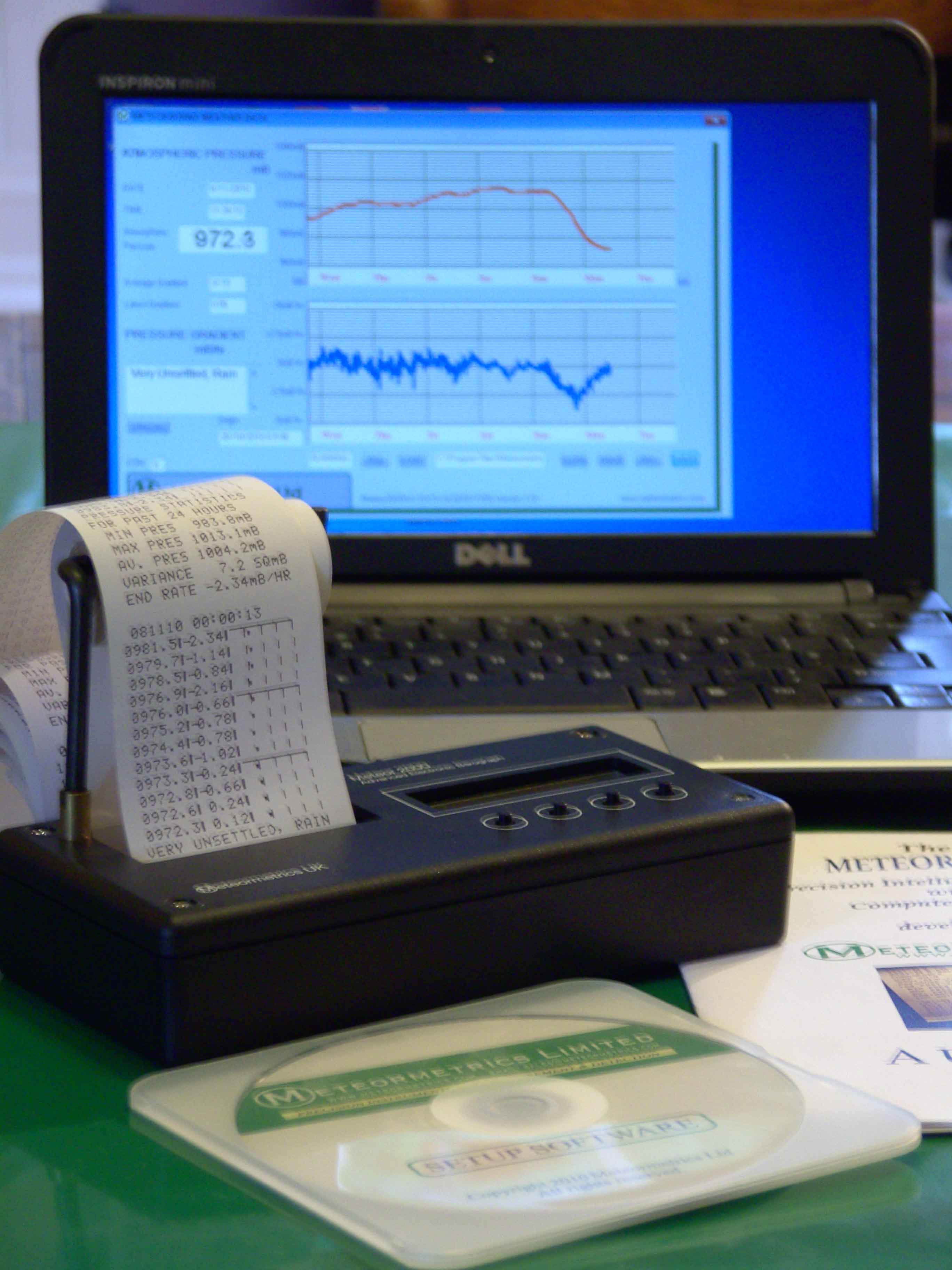
Specialising in custom-designed, precision scientific instruments, built, programmed and calibrated
to the most exacting standards. The range includes precision dataloging barographs,
with built-in statistical analysis, Barographic Transient Event Recorders
and computer-interfaced detectors and sensors
for environmental monitoring & process control.
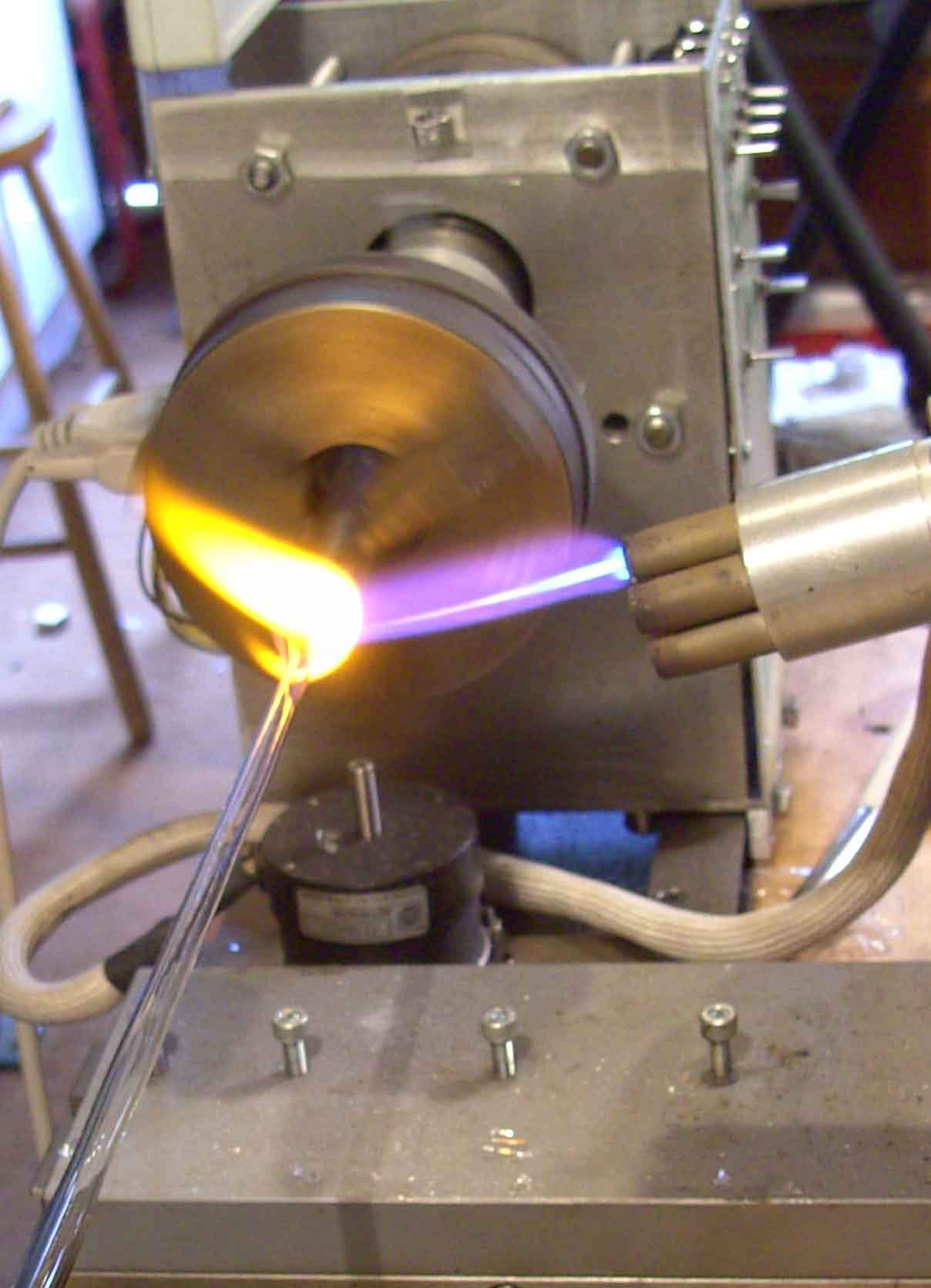
A site dedicated to scientific techniques, experimental methods, &
investigative tools for the inventor, researcher
and laboratory pioneer. Articles on glassblowing, electronics, metalcasting, magnetic
measurements with new material added continually. Check it out!
www.drkfs.net
Scanning by Photo Acoustic Spectroscopy
In
photo acoustic spectroscopy, the energy absorbed from the infrared
radiation is measured by sensing the mechanical vibration produced,
and by employing an appropriate acoustic measuring device. A diagram
representing the photo acoustic spectroscopic sensing system is shown
in figure 23.
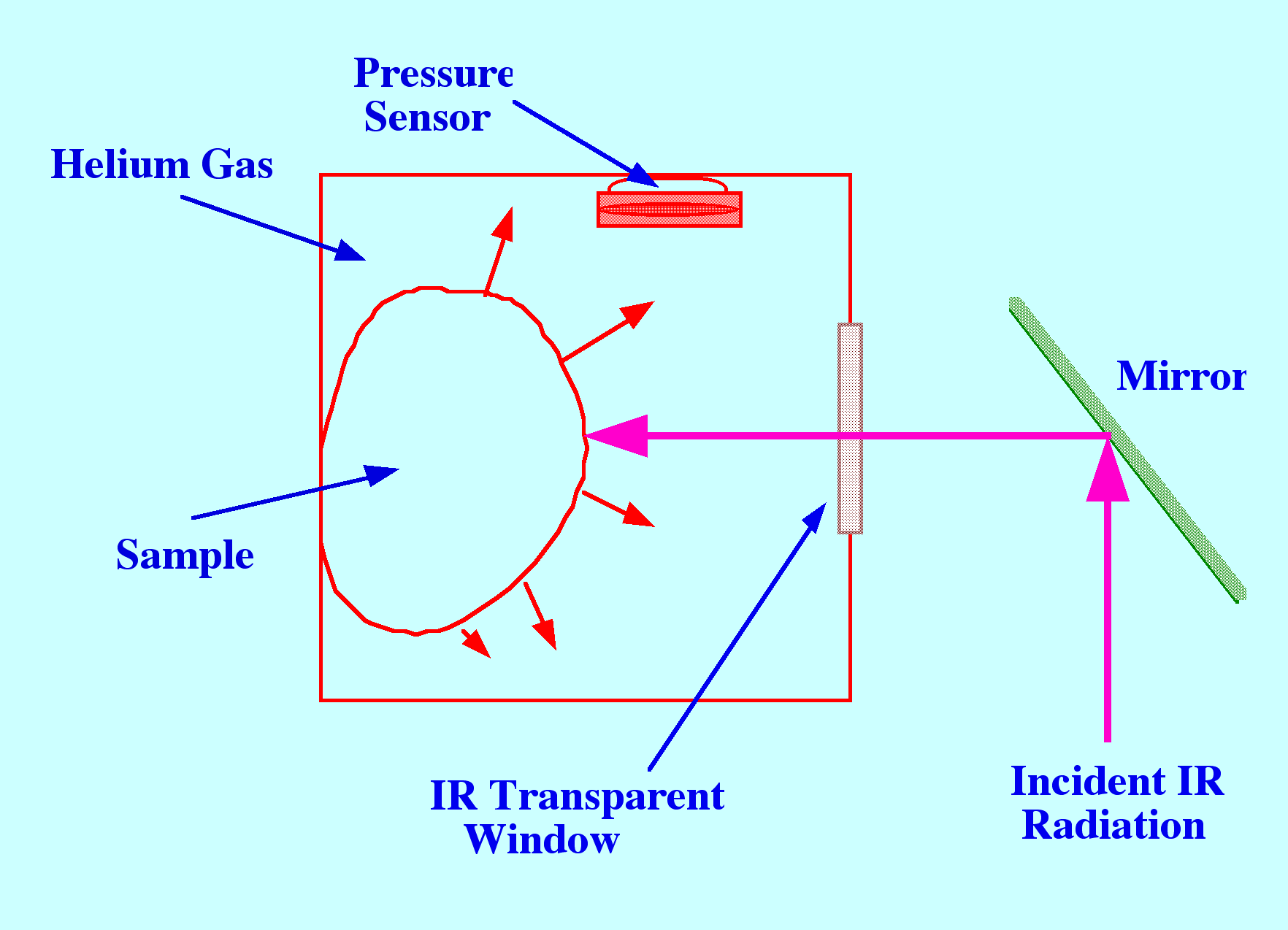
The
incident radiation is allowed to fall on the sample contained in a
suitable enclosure. When the modulated infrared radiation is absorbed
by the sample, the substance heats and cools in response to the
radiation received. Situated in the enclosure is an acoustic sensing
device, which may be a simple microphone or a piezoelectric sensor.
The sensor detects the acoustic pulses (caused by the heating of the
surrounding gas) as they are generated by the different IR
frequencies that are absorbed. The advantage of this type of IR
measurement is that it can be used effectively with very black or
highly absorbing samples.
Lloyd
et al
[6] employed a simple micro phonic detector as the sensor, to scan a
TLC plate. The thin layer sheets were either aluminium or
poly(ethylene terephthalate) backed, and both silica and alumina were
used as a thin layer about 250 μm
thick. 1 cm diameter discs were excised from the plates and placed in
the sample compartment of the microphonic cell. The cell was sealed
in a glove bag after purging for 15 minutes with helium The cell
itself was fabricated from polished stainless steel
with a sodium chloride window, and was supported on vibration-free
mounts. It had a total volume of about 0.4 cm3.
The IR output from a Nicolet 7199 FTIR spectrometer was focused
through the sodium chloride window onto the plate surface. The
acoustic waves were detected with a Brüel and Kjoer 4165
microphone, which was exposed to the helium in the cell, through a
pipe 10 mm long and 1 mm I.D. Some spectra of
tetraphenylcyclopentadienone taken by this procedure are shown in
figure 24.
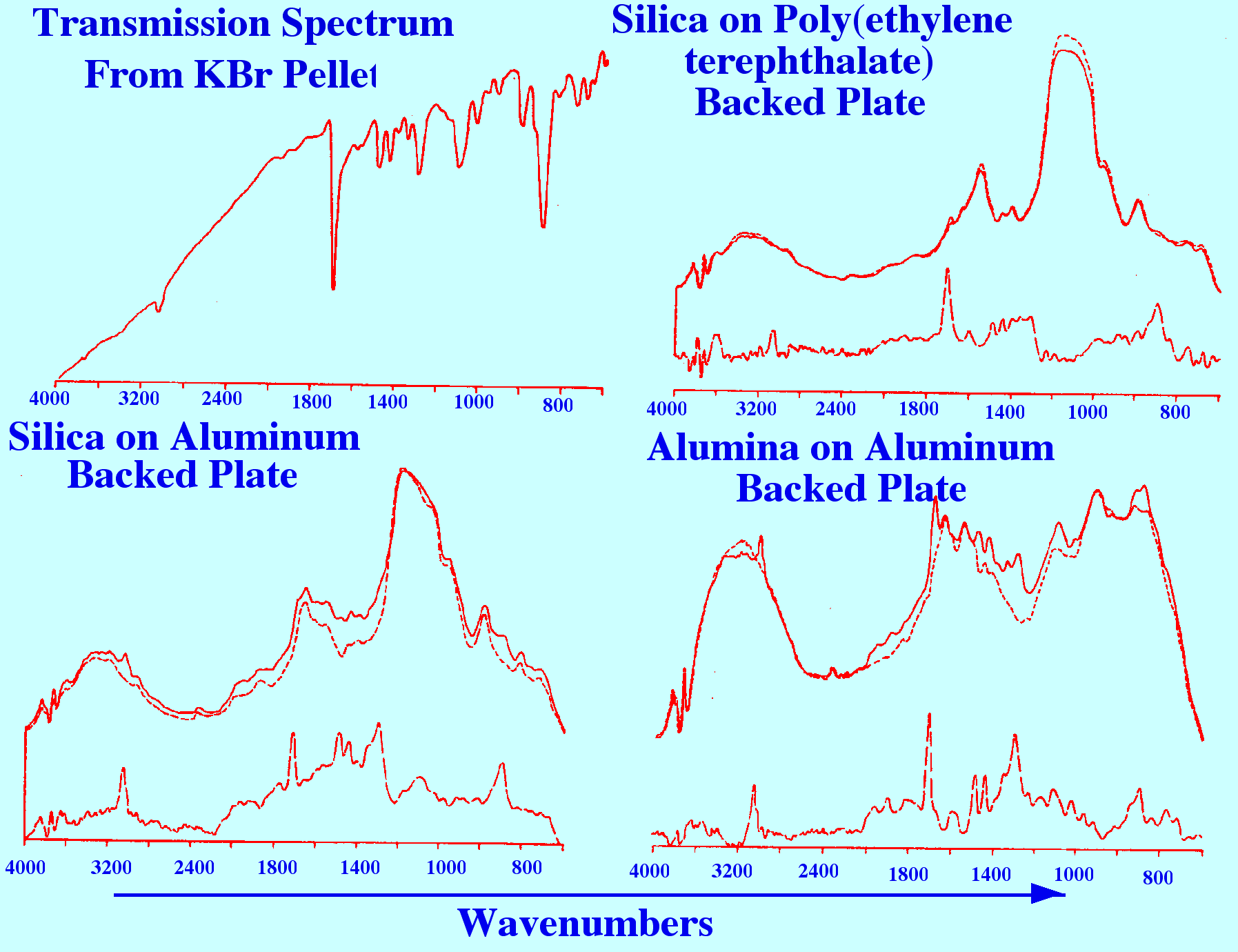
The
figure shows the actual spectra as taken, the background spectra of
the plate, and the difference spectra of the sample alone. It
is seen, by comparison with the spectra
obtained from the KBr pellet sample, that reasonably fine structure
is disclosed. However, as might be expected, the signal to noise
ratio is not very satisfactory, and consequently
the absolute sensitivity is not as good as that obtained by other
scanning procedures.
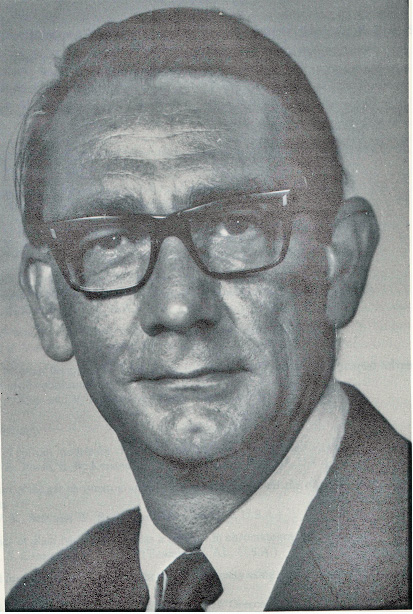
About the Author
RAYMOND PETER WILLIAM SCOTT was born on June 20 1924 in Erith, Kent, UK. He studied at the
University of London, obtaining his B.Sc. degree in 1946 and his D.Sc. degree in 1960.
After spending more than a decade at Benzole Producers, Ltd. Where he became head of
the Physical Chemistry Laboratory, he moved to Unilever Research Laboratories as
Manager of their Physical Chemistry department. In 1969 he became Director of Physical
Chemistry at Hoffmann-La Roche, Nutley, NJ, U.S.A. and subsequently accepted the position
of Director of the Applied Research Department at the Perkin-Elmer Corporation, Norwalk, CT, U.S.A.
In 1986 he became an independent consultant and was appointed Visiting Professor at Georgetown
University, Washington, DC, U.S.A. and at Berkbeck College of the University of London; in 1986
he retired but continues to write technical books dealing with various aspects of physical chemistry
and physical chemical techniques. Dr. Scott has authored or co-authored over 200 peer reviewed
scientific papers and authored, co-authored or edited over thirty books on various aspects of
physical and analytical chemistry. Dr. Scott was a founding member of the British chromatography
Society and received the American Chemical society Award in chromatography (1977), the
M. S. Tswett chromatography Medal (1978), the Tswett chromatography Medal U.S.S.R., (1979),
the A. J. P. Martin chromatography Award (1982) and the Royal Society of Chemistry Award in
Analysis and Instrumentation (1988).
Dr. Scott’s activities in gas chromatography started at the inception of the technique,
inventing the Heat of Combustion Detector (the precursor of the Flame Ionization Detector),
pioneered work on high sensitivity detectors, high efficiency columns and presented fundamental
treatments of the relationship between the theory and practice of the technique.
He established the viability of the moving bed continuous preparative gas chromatography,
examined both theoretically and experimentally those factors that controlled dispersion
in packed beds and helped establish the gas chromatograph as a process monitoring instrument.
Dr. Scott took and active part in the renaissance of liquid chromatography,
was involved in the development of high performance liquid chromatography and invented
the wire transport detector. He invented the liquid chromatography mass spectrometry
transport interface, introduced micro-bore liquid chromatography columns and used them
to provide columns of 750,000 theoretical plates and liquid chromatography separations
in less than a second.
Dr. Scott has always been a “hands-on” scientist with a remarkable record of accomplishments in chromatography ranging from hardware design to the development of fundamental theory. He has never shied away from questioning “conventional wisdom” and his original approach to problems has often produced significant breakthroughs.




